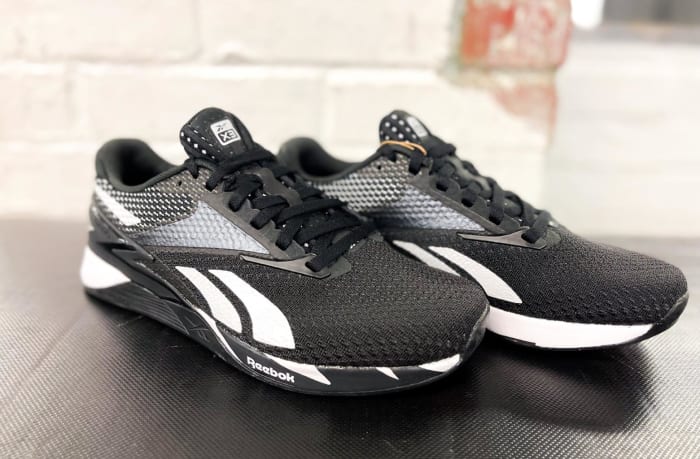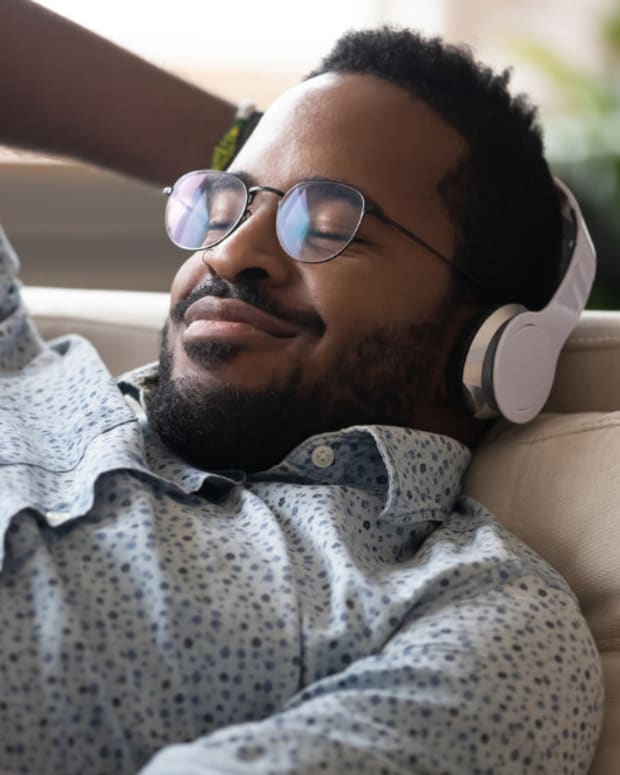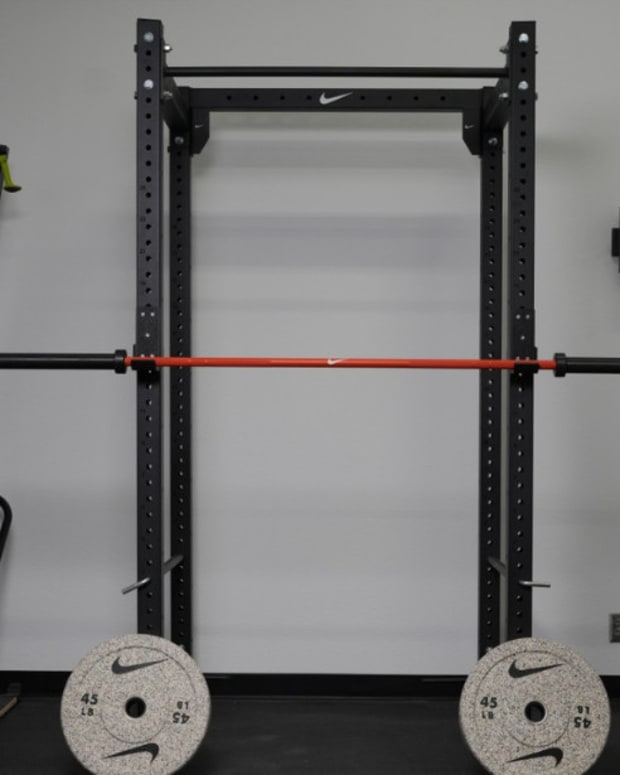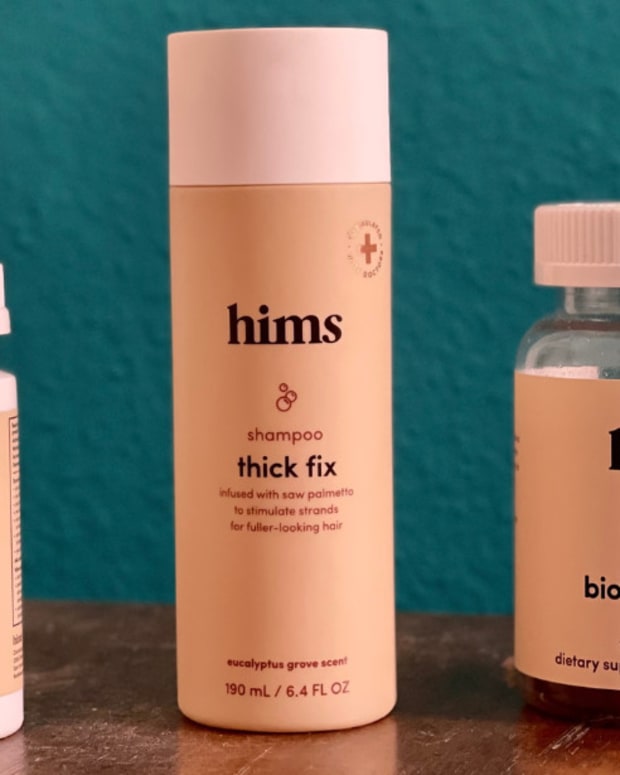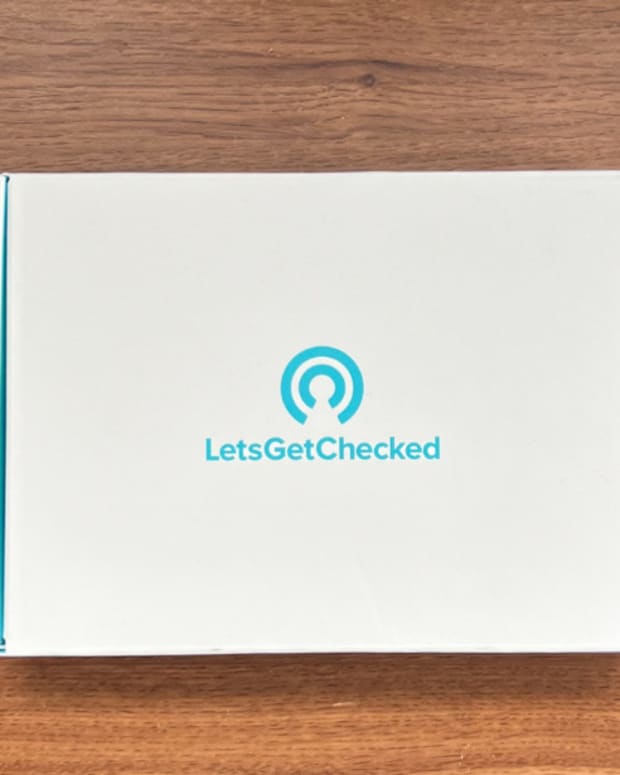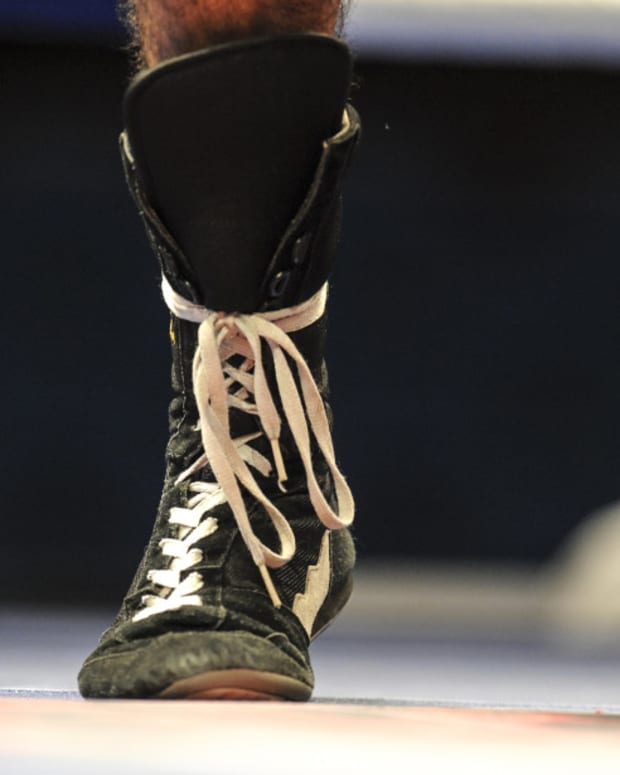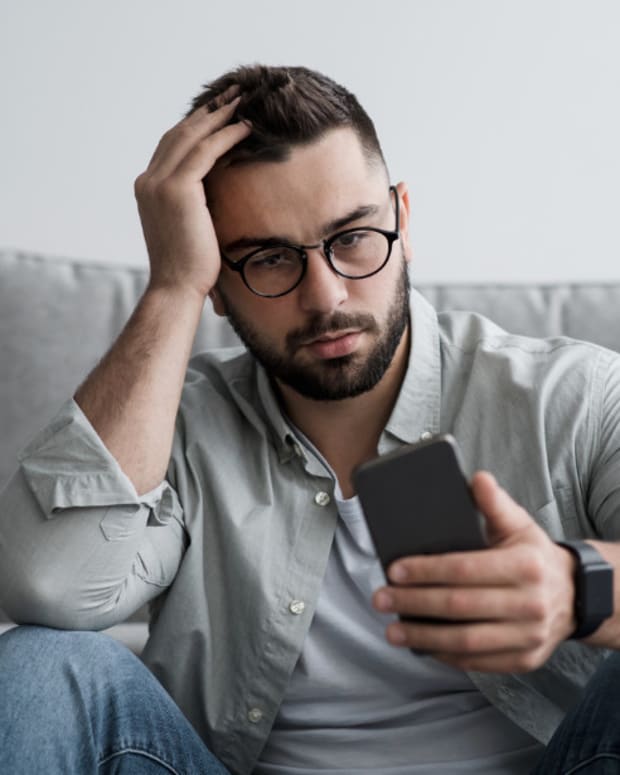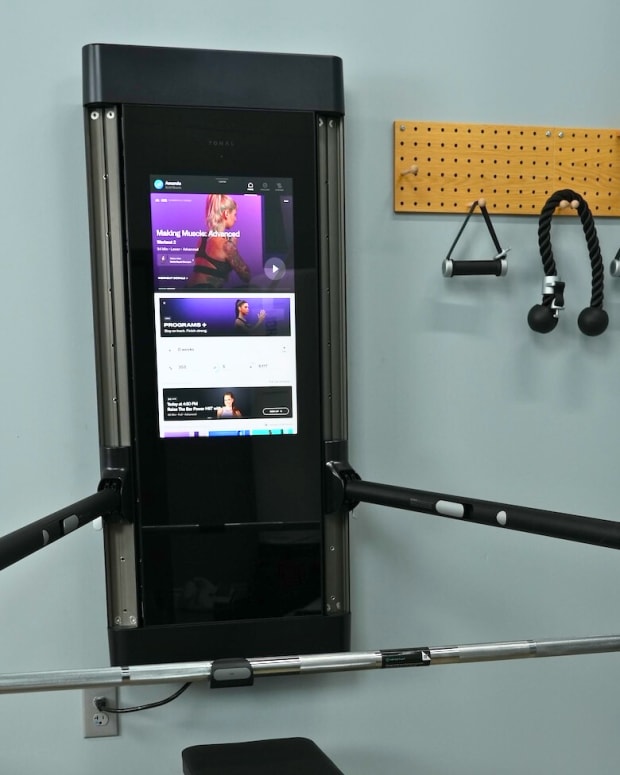The products featured in this article have been independently reviewed. When you buy something through the retail links on this page, we may earn commission at no cost to you, the reader. Sports Illustrated editorial staff are not involved in the creation of this content. Learn more here.
While we can all be picky about shoes for our specific sport, it can be more difficult to know what to look for in a do-it-all shoe. Workout shoes should be able to handle your standard gym activities which means they have to be springy and flexible enough for some cardio, but also supportive and stable enough to handle some weight.
Finding that perfect balance can be difficult, but there are definitely some shoes that are capable of handling whatever workout you throw at them. We gathered up our favorites—spanning a range of budgets—that can handle different exercise styles including CrossFit, running, powerlifting and court sports. If you are looking for a running shoe or walking shoe, these might not fit the bill, but if you need a new pair to keep in your gym bag, these picks are for you.
Our Picks for the Best Gym Shoes 2024:
- Best Gym Shoes For Men: NoBull Trainer+
- Best Gym Shoes For Women: NoBull Trainer+
- Best Gym Shoes For Cardio: Allbirds Tree Dasher 2
- Best Gym Shoes For Lifting: NoBull Canvas Lifter
- Best Minimilist Shoes For Circuit Training: Xero Prio Neo
- Best Shoes For the Gym and Running: Kuru Flux
- Best Nike Gym Shoes: Nike Metcon 9
- Best Gym Shoes For Plantar Fasciitis: Hoka Clifton 9
- Best Gym Shoes For Cross Training: Reebok Nano X3
- Best Workout Shoes For Wide Feet: NoBull Trainer+
- Best Gym Shoes For Flat Feet: NoBull Ripstop Runner
Best Gym Shoes For Men: NoBull Trainer+
Key Features:
- Best for: Cross-training
- Drop: 4 millimeters
- Weight: 12.7 ounces
- Fit: True to size
- Support: Neutral
- Price: $139
If you need a new pair of gym sneakers, check out the NoBull Trainer+. We picked these as the best workout shoes for men because they combine both stability and flexibility to help you perform at your peak in any workout. We think these are a great choice for men in particular because shoes that provide more stability are ideal for people with a heavier body weight, according to the American Academy of Orthopeadic Surgeons. The outsole features a high carbon rubber tread and a herringbone pattern with deep grooves for indoor and outdoor traction, so you won’t find yourself at risk of slipping. It has a great range of color and pattern options and comes in sizes up to 18 and half sizes. We think this is a great option for those who like the original Nobull Trainer, but are looking for a thicker midsole. The upper incorporates a highly flexible mesh base layer to give the foot a full range of motion for agility moves and cross-training and has the SuperFabric guard plates that create a durable 360-degree shield.
"I can see why these trainers have a cult-like following," said a member of our testing team. Our team wore the NoBull Trainer+ for a strength training workout and loved the grip they provided. “Not only are they great to look at, but I love the sturdy Superfabric material," our tester said.
Pros:
- Lots of color and pattern options to suit any style
- Comfortable so you can stand in them for a long training session
- Breathable upper helps avoid getting uncomfortably sweaty feet
Cons:
- More expensive than some other options on our list
- No wide size options so not the best choice for every athlete
Best Gym Shoes For Women: NoBull Trainer+
Key Features:
- Best for: Cross-training
- Drop: 4 millimeters
- Weight: 12.7 ounces
- Fit: True to size
- Support: Neutral
- Price: $139
We think the NoBull Trainer+ shoes are top workout shoes, which is why we gave them the title of best shoes for working out at the gym both for women and for men. The NoBull Trainer+ has a cushioned EVA midsole, but is designed to be secure and supportive enough to handle your toughest workouts. It has a molded anatomical sockliner, and the mesh upper is breathable and durable. It feels cushioned without being too soft and has multi-directional traction to give you stability and grip in any workout.
One of our testers took these gym shoes for a spin during a recent workout and loved the stable support they provided. "When I’m deadlifting I normally have to remove my shoes to get a wide balanced grip on the floor, but not with these trainers," she said. However, she noted that these shoes were not the best for HIIT workouts, saying the stiff toe area made quick movements more difficult.
Pros:
- Additional heel and collar padding provides comfort and support
- Lace system is internally webbed for lateral and medial stability
- Herringbone outsole pattern provides traction on indoor and outdoor surfaces
Cons:
- May feel stiff at first and might take a while to break in
- Expensive and may be out of budget for some athletes
Best Gym Shoes For Cardio: Allbirds Tree Dasher 2.0
Key Features:
- Best for: Cardio, light running, light workouts
- Drop: 7 millimeters
- Weight: 10.2 ounces (men’s 9)
- Fit: True to size
- Support: Neutral
- Price: $135
The use of natural materials in the foam also makes the Tree Dashers highly breathable, keeping your feet from feeling stifled with heat. The lining topper is also made from a moisture-wicking material derived from eucalyptus: Tencel, a material often found in cooling mattresses, is an ideal material to wear your sweatiest cardio sessions.
The thicker foam base on the shoe makes these shoes capable of handling plenty of long walks and also makes them good shoes for light runs, our tester says. “The longest I went in these was three miles, and I probably wouldn’t recommend going further than that in these shoes.”
Our tester also liked these shoes during moderate gym sessions, and found the upper snug but stretchy and super comfortable to wear with both thinner and thicker socks.
Pros:
- Reviewers say the shoes are snug and comfortable
- These shoes come in half sizes, unlike some other Allbirds styles
Cons:
- Some reviewers say that the shoe is not very durable and wears quickly
Best Gym Shoes for Lifting: NoBull Lifter
Key Features:
- Best for: Lifting
- Drop: 17.5 millimeters
- Weight: 13.7 ounces
- Fit: True to size
- Support: Neutral
- Price: $149
If you are looking to lift heavy, you will need a weightlifting shoe that can offer support and a stable platform for your lifts—and that can hold up under lots of weight. The NoBull Canvas Lifter is our pick for the best gym shoe for lifting because it is a true lifting shoe that can hold its own during cleans and deadlifts. It has a premium canvas upper in a range of colors, including red, brown and black camo. We love these shoes for lifting because the Velcro strap around the midfoot provides extra arch support and keeps the foot securely in place. Our tester says the shoes feel like an extension of your foot: “They really are just flattening the bottom and lifting the heel which is the ideal ergonomics for lifting,” she says. “The Nobull lifters feel very form-fitting and stable, and I was really able to focus on pushing through my heels when doing a squat rather than spreading my toes and focusing on stability.”
As noted by our tester, the Lifters have a stacked heel that offers improved range of motion for better squatting mechanics. The heel consists of individually cut layers, and NoBull states that two to three hours of precise hand work goes into each heel and outsole. If you are looking for a pair of lifters that will last you a lifetime this is the pair for you—though keep in mind that it does have a 17.5 millimeter raised heel, so if you are used to a canvas lifting shoe with a flat sole (like Converse Chuck Taylor All Star shoes, for instance) this may take some time to adjust to. Our tester recommends this type of build for those in a more advanced muscle-building regimen: "The lifted heel in the NoBull Lifter along with the secure outer shell really gives you the extra support you need to lift heavy," she says.
Pros:
- Handmade by teams of skilled craftsmen
- Ultra-durable upper and outsole while help these shoes stand up to your toughest workout
- Molded sockliner is designed for support and cushioning
Cons:
- A pricier shoe that might not be suitable for every athlete's budget
Best Minimilist Shoes for Circuit Training: Xero Prio Neo
Key Features:
- Best for: Those who like neutral or barefoot shoes
- Drop: N/A
- Weight: 8.7 ounces (one shoe, men’s 9)
- Fit: True to size
- Support: Neutral
- Price: $89.99
The Xero Prio Neo is our pick as one of the best “barefoot” choices for circuit training because the shoes have a flexible, but stable, fit that allows full mobility while still supporting you from the bottom up. One reviewer wrote on Xero’s website that the Prio Neo were the answer after a lengthy search for a court-sports appropriate barefoot shoe: “I have been wearing various brands of barefoot shoes for several years, but only recently thought about looking for a court shoe. I got to try my new Prios today and they were fantastic!,” writes the reviewer, adding that “I had great stability, terrific traction, and felt very light on my feet. I will definitely be getting another pair before the outdoor season starts in spring!”
Our team’s tester Levi Bettwieser says that the Prio Neo give a nice performance edge over being barefoot, his typical preference: “When landing in my jumps, I actually feel that I got better shock absorption when I train barefoot, but the grip on the Prio Neo soles gave me a bit extra traction to increase my vert and power output, which I felt in my glutes, hamstrings, and quads,” Bettwieser says. The Prio Neos, which average 4.8/5 among 8,000-plus reviews on the brand’s website, are also an affordable gym shoe option at just under $90 a pair.
Pros:
- Grippy so you won't slip on the court
- Moisture-wicking lining and breathable mesh build
Cons:
- Tester noted that some dust and grit had creeped into the shoe and onto socks over a long, dusty day of outdoor wear
Best Gym Shoes For Gym and Running: Kuru Flux
Key features:
- Best for: Flat feet, cross-training
- Drop: 8 millimeters
- Weight: 9.3 ounces
- Fit: True to size
- Support: High
- Price: $150
The Kuru Flux shoe is a high-performance shoe that can suit a variety of workouts—or the kind of workout with lots of variety like a one hour Orangetheory workout (running, rowing and weight training), for instance. Indeed, the shoe is lightweight enough to keep you agile, which makes the Flux one of the best shoes for a long-distance run. Meanwhile though, the bouncy tread (15 percent bouncier than traditional EVA foam, Kuru says) and unique heel-cupping insole is forgiving on the knees for all your burpees and squat jumps.
Online feedback for the shoe averages 4.3/5 stars. Positive reviews echo the sentiment that the Flux boasts cushioning comfort, and alleviates long-standing (pun intended) foot pain: “I have had them now for about a month, and they help relieve the pain of neuropathy while I'm working. My feet no longer swell,” writes on reviewer. Another reviewer said the shoe is “very light and feels great the second you put it on.
The shoes have a futuristic aesthetic that can transition from gym to day (or even night), and come in a range of bold and neutral colors to suit an evening out or an everyday look.
Pros:
- Lots of cushioning from the bouncy EVA foam
- Slip-on design
- Reflective strip creates extra visibility night runs
Cons:
- Many reviewers did not enjoy the Flux’s untraditional tongue-less design
- One of the pricier gym shoes
Best Nike Gym Shoes: Nike Metcon 9
Key Features:
- Best for: Lifting and cross-training
- Drop: 4 millimeters
- Weight: Not disclosed online
- Fit: True to size
- Support: Neutral
- Price: $150
Nike is synonymous with sports and the brand has a sneaker for every activity. We think the Metcon 9 are some of the best cross-training shoes to wear at the gym, since they’re ideal for a variety of workouts and exercises. The Metcon 9 has some updates from the previous iteration. Rather than the Nike React foam (common in Nike's running shoes), you’ll find dual-density foam and a larger HyperLift plate for added stability. This inner plate provides extra support distributes weight from edge to edge during lifts and flexes just enough to not feel stiff. An extended and super grippy rubber sole wraps around the arch of the shoe, providing extra traction for rope climbs. For more info, check out our full Nike Metcon 9 review.
One of our testers noted that these shoes have a wider toe box than the Metcon 8, but he still didn’t find himself slipping in the shoes. “On leg days, this is where the stability of the shoe really excels, and the HyperLift plate kept me locked on the platform,” he says.
On Nike's website the Metcon 9 earn 4.3/5 stars with 63 reviews. Several customers praised the comfort and support.
Pros:
- Very supportive making them a good choice for weightlifting
- Wider toe box to acomodate more lifters
- Extended rubber rope wrap for added grip
Cons:
- As these shoes are made for lifting, they aren’t great for cardio
Best Gym Shoes For Plantar Fasciitis: Hoka Clifton 9
Key Features:
- Best for: Running, cardio, light lifting
- Drop: 5 millimeters
- Weight: 8.9 ounces
- Fit: Large
- Support: Neutral
- Price: $140
About two million patients are treated for plantar fasciitis every year, health experts say. The painful condition is caused when the band of tissue that supports the arch of your foot, the plantar fascia, becomes inflamed. If you suffer from plantar fasciitis, you may have trouble finding shoes that keep the pain at bay and allow you to work out to your full potential. According to the American Academy of Orthopaedic Surgeons, if you struggle with plantar fasciitis you should look for a show with thick soles and extra cushioning.
We think the Hoka Clifton 9 is a great choice if you have plantar fasciitis because it features an incredibly stacked EVA foam sole that supports and cushions the foot without being too soft.
The rocker in the shoe means you can run and walk without flexing the foot as much as you would in a traditional shoe—this keeps your arch from stretching too much and aggravating the plantar fasciitis without compromising your form. Since you sit down in the midsole a bit, it also hugs the sides of the foot and provides some extra stability in the arch.
One tester put a pair of the Hoka Clifton 9 through the paces at the gym. She loved the fit and slight bounce these sneakers have. "They feel cushioned, but also still structured and supportive. My favorite thing about the Clifton 9s is the wide toe box because when I'm running my toes typically feel compressed in other shoes," she said. She felt the shoes weren't the most breathable, but noted that was not a dealbreaker.
Pros:
- Lots of cushioning and support to help reduce pain with standing and walking
- Stability in the arch make it a great for cardio and running
Cons:
- Runs slightly on the narrow side, so not the best choice for someone with a wide foot
Best Gym Shoes For Cross-Training: Reebok Nano X3
Key Features:
- Best for: Cross-training, lifting
- Drop: 7 millimeters
- Weight: 13.85 ounces
- Fit: Large
- Support: Neutral
- Price: $150
When it comes to the best training shoes to take you from the weight rack to your HIIT class and then onto the treadmill, we love the Reebok Nano X3. The Reebok Nano X3 is a great shoe for cross-training because it is specifically designed as a ‘lift and run’ shoe so it performs well for both activities. Our tester wore these shoes for a diverse gym session that included a treadmill run and an Olympic weightlifting workout. She says the Nanos are "best for functional fitness and squatting" since they offer a fair amount of versatility: "During squats and snatches, the Nano X3s provide a decent amount of stability. I like the heel drop on these for that purpose," she adds.
Related Post: The Best Reebok Shoes You Need Right Now
It also runs on the wider side in the toe box and is incredibly breathable which helps keep your feet dry and prevent blistering. A unisex fit, stellar traction (without being bulky or lugged) and a dual-purpose domed heel piece allow this shoe to excel in versatility. Thanks to their durability we think these are great shoes to wear for your next WOD at CrossFit or to tackle high intensity interval training.
Pros:
- Versatile design make them a great choice for cardio and weightlifting workouts
- Unisex fit so they work for men and women
- Comfortable so you withstand even a long workout
Cons:
- Some customers complain that these shoes wore out quickly compared to older models
Best Workout Shoes For Wide Feet: NoBull Trainer+
Key Features:
- Best for: Cross-training, lifting
- Drop: 4 millimeters
- Weight: 12.7 ounces
- Fit: True to size
- Support: Neutral
- Price: $139
The NoBull Trainer+ is a softer, more comfortable version of the NoBull original trainer, and is one of the top gym shoes for a well-rounded cross-training session. It has a wider fit which is ideal for wide and flat feet, and is great for both indoor and outdoor training. It is well-cushioned, giving the foot good impact protection and providing ample support for moderate lifting. The cushioning makes it comfortable enough for everyday wear, too. The foam midsole is responsive and works great for running short distances. (Think a warmup that’s less than a mile.) It’s a great shoe for CrossFit workouts and its durable design ensures it will hold up for a long time.
One of our testers raved about these gym shoes after wearing them during a recent workout, saying she understands the hype around them. While she thought the NoBull Trainer+ were great for strength training workouts, she said these shoes were not the most comfortable during HIIT workouts. "When I am lifting heavy I want very little “give” in my shoes so I can feel as balanced and secure as possible—this is where the trainers really shine. However, when I'm cross training I need more reactivity and don’t want my shoes’ material restricting my movement," she said.
Pros:
- Lace system is internally webbed to keep your foot in place
- Stable base make them a good choice for lifting and walking
- Great for indoors and out so you can use them wherever your workout takes you
Cons:
- An expensive option and might not be suitable for every athlete's budget
- Somewhat heavy so not ideal for long runs
Best Gym Shoes For Flat Feet: NoBull Ripstop Runner
Key features:
- Best for: Flat feet, cross-training
- Drop: 10 millimeters
- Weight: 292 grams
- Fit: True to size
- Support: High
- Price: $139
If you have flat feet it’s important to look for a workout shoe that offers motion control to support your arch. We think the NoBull Ripstop Runners are the best gym training shoes for flat feet because of the amount of stability they offer. In fact, NoBull classifies these as stability running shoes, which can help reduce the risk of injury for athletes who have flat feet. These sneakers have a medial post which is a firm midsole made of thick cushioning to fight overpronation. A dense midsole like this one will help your foot resist motion in your shoe. We think these are a great choice to throw in your gym bag because they are breathable and durable, making them ideal for any training session.
Related Post: The Best Shoes for Flat Feet
Pros:
- Stability running shoe is ideal for someone with flat feet
- Medial post helps fight overpronation
- Durable so you can wear them even during your toughest workout
Cons:
- No wide options so they may not be the best fit for every athlete
Honorable Mentions
A few of these shoes were edged out by other brands within their given superlative, but we felt they deserved a shout-out based on the positive personal experiences of our testers.
On Cloud X Shift
This is another type of gym shoe that we like for cardio and lifting alike. Tester Emma Witman played basketball and did resistance training with dumbbells in the On Cloud X Shift shoes: “Even though I’m not an avid gym-goer, I see these shoes everywhere. And I think I get why now,” she says. “These are one of the most unique shoes I’ve ever worked out in. I felt really nimble because the shoes are light as a feather, but there was plenty of shock absorption from the unique tread.”
adidas Ultra 4DFWD Running Shoes
We recommend this adidas running shoe for cardio workouts because it is incredibly cushioned and responsive, and is designed to help you glide forward while you run. One of our testers loved wearing these shoes to the gym and then out with friends. She noted how the fit helped propel her during cardio workouts. "[There's] lots of bounce and cushioning towards the back of the shoe, but not much towards the front which is giving that forward angle to the shoe that helps with forward motion," she said. She also liked how snug and secure these running shoes felt.
Related Post: adidas Ultra 4D Review
Asics Gel-Rocket 10
Because most court sports require a lot of lateral movement, you will want a shoe that has proper ankle support. We think the Asics Gel-Rocket 10 Volleyball Shoes are a perfect choice for court sports because they have a flexible, but stable fit that allows you to move with full mobility while still supporting you from the bottom up.
How We Tested the Best Gym Shoes
As a former college track and cross-country runner and former Commerce Editor for Runner’s World magazine, I felt up to the task of deep diving into the best shoes for gym workouts. I also had the assistance of a team of writers and editors, who put these shoes to the test themselves with a keen eye toward the shoes' comfort, versatility and style. We also researched the most popular models of top training shoes to find non-incentivized reviews from trusted sources, such as customer reviews from those who purchased the shoes with their own money.
We considered features of the shoes like drop, insole quality, weight and support as well as materials used to make the shoes which help to determine comfort, durability and performance. We looked for shoes that will serve a range of workouts, budgets, foot shapes and conditions to find the 10 top gym shoes available today.
Why Buy Gym Shoes?
Your workout is only as good as your shoes. While it may seem a bit silly to say—and perhaps slightly hyperbolized—there is some real truth to the statement. Your feet are responsible for carrying your weight, keeping your balance and absorbing the impact of every footfall—so they deserve to be pampered a little.
But a new pair of shoes is not just about making your feet feel good and look pretty—having the best exercise shoes can help you reach your potential, whether that means lifting heavier, running farther or jumping higher.
Related Post: The Best Treadmill Running Shoes
A true pair of gym shoes is also designed to do it all. Unlike running, hiking, walking or various sport shoes, these will be able to help you lift, jump, run and train without having to swap out footwear.
Generally, gym shoes will have some cushioning—though they are usually somewhat stiff to prevent collapsing while lifting weights—ample arch support, a low drop and some ankle stability to help with lateral movement for sports like Zumba, CrossFit or HIIT workouts.
Though we specified each of these shoes with a superlative that highlights their best features, these shoes can pretty much be used for all of your gym workouts.
Gym Shoes vs. Running Shoes
Is it okay to wear your running shoes to the gym? Or your gym shoes on your next run? According to the American Academy of Orthopaedic Surgeons, it’s important to wear the appropriate sneaker for the specific sport or activity you’re participating in. This is important not only to prevent injury, but wearing an athletic shoe for specific activities may even improve your performance.
Running shoes differ from athletic shoes in the types of support, stability and cushioning they offer. Some of the best running shoes provide lots of stability or motion control, which is important for runners with flat feet. However, they may feel bulky or heavy due to their dense cushioning so you wouldn’t want to wear them if you’re running up and down a court, or jumping in a fitness class.
On the other hand, you probably wouldn’t want to wear your training shoes during your next marathon. The American Academy of Orthopaedic Surgeons says cross trainers should not be worn if you're running more than four miles daily because of the material they are made from and the tread on the sole. Court shoes, like you’d wear for volleyball and tennis, are designed to provide stability in all directions and are made from soft leather with a solid tread. They may not be the best trail running shoes, however, since you want a shoe with deep tread for added grip.
With that in mind, if you practice one particular sport or activity several times a week, it’s recommended you buy a shoe designed for that activity, for example a running sneaker versus a weightlifting shoe. However, if your exercise routine includes a variety of workouts and activities, a cross-training shoe may be a better fit for you.
How to Choose the Best Gym Shoes for You
You will also want to consider your foot size and shape. Shoes will generally state if they run short, long, narrow or wide, and if they don’t state it outright, the comments can probably give you an idea.
Finally, consider any past injuries, nagging pains or known complications like overpronation (or when your foot rolls to the inside during your stride) or plantar fasciitis. This will also affect which shoes are best for you as these conditions require a solid, inflexible, supportive shoe.
How to Make Your Gym Shoes Last
If you want to make your gym shoes last as long as possible, there are definitely some measures you can take to eke every last wear out of them:
- Take them off properly. Make sure you are untying your shoes and loosening the laces after every use. This helps prevent the shoes from creasing and tightening in the heel which can lead to a breakdown of the shoe and cause tightness in the Achilles.
- Save these shoes for your workouts. Don’t wear them casually, and try to keep them as clean as possible. If they do become dirty, spot clean with a damp rag and do not put them in the washing machine as this can break down the stitching, adhesives and foam.
- Invest in at least two pairs of gym shoes and rotate them out. If your budget allows a second pair of training shoes, switching them out will let the foam decompress and help them last longer over time. This is especially important if you use them most days of the week.
How Gym Shoes Should Fit
Gym shoes should have a snug—but not tight—fit. When you work out, your feet are subject to swelling, so you want to make sure that you have enough space in the shoe for your foot to expand a little bit. About a thumb's width of space is best—though you can get away with a bit less as long as your toe isn’t touching the front.
You will also want to make sure that your heel is secure in the shoe and there is no slippage or movement—this is particularly important in plyometrics and HIIT cardio workouts where you may be jumping or moving around. You do not want to chance slipping out of your shoe as it could cause injury.
Do You Need Different Gym Shoes for Each Workout?
Generally, no. If you are looking for a basic workout shoe that can withstand some cardio and lifting, you can definitely get away with a single shoe. If you are invested in a particular sport (running, tennis, boxing etc.), you will want to have individual shoes that are tailored to the needs of the sport, and then a separate workout shoe for your traditional gym workout days.
Best Gym Shoes FAQs
Can you use running shoes in the gym?
You can use running shoes, and they are a very comfortable option that is great for cardio exercises. While they can withstand some light lifting, you don’t want to put too much weight on them because the softer foams compress much easier than a lifting shoe and it can kill the shoe very quickly.
How long should you keep your gym shoes?
A quality pair of gym shoes should last at least five to six months with consistent use, though you may be able to get a bit more time out of them if you use them less frequently or are switching them out.
Are flat shoes better for working out?
If lifting is your primary form of exercise, then yes, flat shoes are often best as they give you a natural, stable plane and help improve balance. Flat or zero-drop shoes are also sometimes used by runners as they provide a more minimalist feel and can help strengthen the legs and feet. If you have Achilles or calf issues, it is best to opt for something with a slight heel as the lack of drop can cause excess stretching in the back of the leg if you aren’t used to it.
Do gym shoes make a difference?
They can absolutely make a difference. Gym shoes are specifically designed to give you the support, cushioning and protection you need to perform at your best, no matter your workout.
How to wash gym shoes?
Do not put your gym shoes in the washing machine. Instead, spot clean with a damp rag.
Final Thoughts
A pair of the best training shoes are a great investment whether you consider yourself a gym rat or a workout newbie. Though they are designed to help you perform at your highest level, they can also help prevent injuries because they provide the proper support and cushioning to protect and support you during your workout.
Because gym shoes are meant to handle a range of movements—both lateral and vertical—they are very versatile shoes that can be used for almost any activity. This means that they can handle everything from HIIT workouts to cardio, heavy lifting to plyometrics and CrossFit to cross-training. While some sports and activities will require you to purchase separate shoes (mostly court sports, ball sports and distance running), most gym-centered activities will be just fine in a pair of well-rounded gym shoes.
Prices are accurate and items in stock as of publish time.









